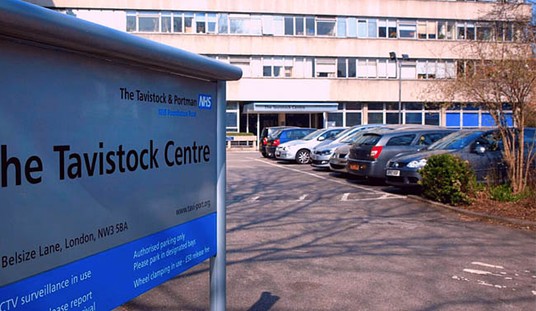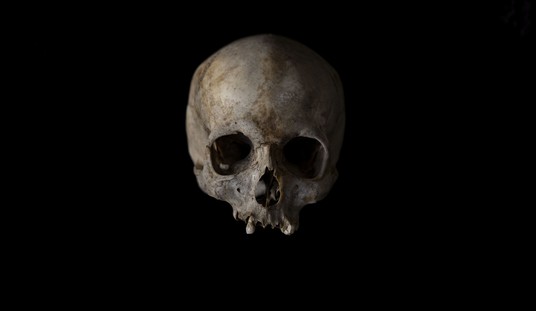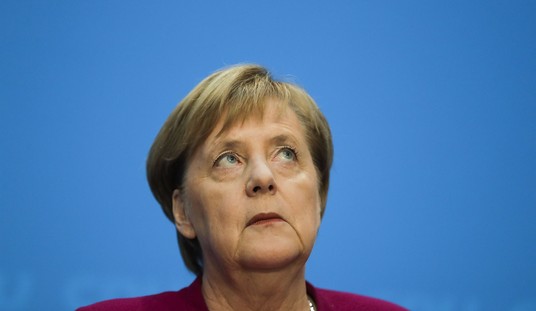I sent the video around to some men in my office to gauge their reactions. “I knew this stuff happened—I see and hear it every once in a while—but the frequency of the remarks was astounding,” one colleague told me. “As a (fairly obvious) gay guy, I like to think I know something about being surveilled and self-aware in public, but this style of direct confrontation is pretty rare,” another said. The video is a “great reminder of how even the most ‘innocuous’-seeming comments pile up over the course of an hour, day, and life to feel oppressive and awful,” added a third. And he noted that the harassment caught on Bliss’ camera only catches one half of the equation: “In the wild,” he told me, “I pretty much only see the once-over from behind, which is legion, and is often accompanied with meeting another dude’s eyes like, amiright?”
Some men, though, still aren’t seeing it. On Twitter, some are pushing back against the video, claiming that it’s not harassment, it’s just annoying, and that refusing to reply is, frankly, impolite. Of course, it’s largely women who are singled out for constant annoyance just for stepping outside, and are dismissed as rude for not accepting it graciously. If you don’t get it after watching this video, the problem isn’t just the guys caught yelling at Roberts. The problem is you.
[T]he video also unintentionally makes another point: that harassers are mostly black and Latino, and hanging out on the streets in midday in clothes that suggest they are not on their lunch break. As Roxane Gay tweeted, “The racial politics of the video are fucked up. Like, she didn’t walk through any white neighborhoods?”
The video is a collaboration between Hollaback, an anti-street harassment organization, and the marketing agency Rob Bliss Creative. At the end they claim the woman experienced 100-plus incidents of harassment “involving people of all backgrounds.” Since that obviously doesn’t show up in the video, Bliss addressed it in a post. He wrote, “We got a fair amount of white guys, but for whatever reason, a lot of what they said was in passing, or off camera,” or was ruined by a siren or other noise. The final product, he writes, “is not a perfect representation of everything that happened.” That may be true but if you find yourself editing out all the catcalling white guys, maybe you should try another take…
[I]f the point of this video is to teach men about the day-to-day reality of women, then this video doesn’t hit its target. The men who are sitting in their offices or in cafes watching this video will instead be able to comfortably assure themselves that they don’t have time to sit on hydrants in the middle of the day and can’t properly pronounce “mami.” They might do things to women that are worse than catcalling, but this is not their sin.
Other activists noted the racial implications not of the men in the video, but of Roberts. “We’ve been talking about street harassment for years, but it takes a woman who looks like her,” said Feminista Jones, a writer and social activist responsible for the #YouOKSis? campaign, who said that while she doesn’t know Roberts’ ethnicity, she “presents” as a light-skinned women. “When black women make videos about street harassment, people still don’t really connect in the most empathetic way.”
Still, Jones noted that the executive director of Hollaback!, Emily May, “gets it” when it comes to the racial elements of street harassment. “She understands that her experiences as a white woman are different than women of color.” While gender is often the primary focus in conversations about street harassment, race can never be left out of the debate. The identities of the women being harassed and the men calling out to them influence both what street harassment looks like, and how it is received. Jones isn’t interested in comparing different efforts to end street harassment and determining which are better than others. “It’s about what speaks to you,” she said. “This video is important for all sectors of this movement. All these videos contribute to our overall message—that this shit needs to stop.”
Once, I had to deliver a package and was waiting outside a door next to a guy who could have played for the Broncos. Another dude walked by and starting calling to me. I turned bright red, terrified that the guy I was next to would think I had invited the attention somehow, or liked it; and yet also desperately hoping that, as he looked like a GI Joe figurine, he might come to my aid. Instead he stood there in silence, refusing to involve himself in my shame. Afterwards I found myself equally mad at both men, and also at my mother, whose only advice on how to handle this continual misery was, “Wear another sweater.”…
But though the dialogue around this video has been largely positive and consciousness-raising (largely), I keep seeing comments about race, or people saying, “Clearly she’s not walking on the Upper East Side [where the rich white people are].” It makes me grind my teeth. Both of the men who ruined my day that miserable August were white. So were the dudes in business suits who harassed me in Bethesda, MD, and in Providence, RI, where I spent a different summer. Walking with my queer friends, I’ve been called a lesbian by Men With Opinions of all colors and creeds.
There might be some class or cultural element to some catcalling. But the real issue is the degree to which women who are less privileged to begin with have to deal with even more harassment.
I fear that middle- and upper-class progressives are once again taking up a very difficult cause whose primary aim is policing the internal mores of working-class life, mores that offend the sensibilities of the wealthier and better educated because it occasions one of the few cross-class interactions where the middle classes don’t have a home-field advantage. As ever, it centers on different understandings of what is and is not acceptable to do in public space.
Living in working-class areas of south Brooklyn, I’ve been struck both by how common it is for a man to catcall and the fact that the women in these areas engage with it as a normal part of life. Something you often hear when this topic comes up is “What one earth are these guys thinking? This never works!”
But you know what: it does work. I’ve seen it often enough trudging back from the subway. A guy hanging with his friends outside of their building calls out at a girl. Often enough, she stops for a bit and has a laugh. Or she yells back a joke and keeps on. Or tells him to go fuck himself. But what I rarely see is anyone just completely blanking the guys and keeping their heads down.
This isn’t to say that women who object to catcalling just need to learn to grin and bear it, or convince themselves that yelling on the street is actually a charming practice. It’s not, and I’ve had to coach myself to not flush and feel intimidated when I, a 6’4″ man, gets yelled at when I’m waiting for a bus. But it is to say that changing this won’t be easy when what’s at stake here isn’t just a question of how men treat women, but also the differing understanding of how to act in shared spaces.
To all the people fulminating about this video, I have one question: have you never been to New York City before?
It is not a metropolis known for its nice manners. Perhaps it’s easier for me to notice. As a Midwesterner who now lives in the genteel South, the abrasiveness of New York manners stands out with all the more contrast. I can pretty much guarantee that a pretty woman won’t get catcalled where I come from. But I can also guarantee she won’t have unsavory men trying to squeegee her windshield when she drives, that she won’t have aggressive panhandlers approaching her asking for money, and that she won’t hear obscenities casually bandied about in the street. Seriously, someday I’ll have to make a similar video of New York to capture all of the many varieties of four-letter words overheard in casual conversation and shouted out across public spaces. I’ll bet I could come up with way more than two minutes of non-stop bleeping.
To be sure, New Yorkers have certain charms that offset their more abrasive side, and sometimes their bluntness can be a virtue. But all this video really shows is that blue-collar and unemployed guys in dodgy New York neighborhoods have really bad manners. Oh, really? How amazing. “Rude People Discovered in New York City, Film at 11.”
Today’s Victorianism comes from the left. They too have an elaborate public morality, but one that is untethered to tradition or religion. Their guiding scripture is whatever trendy philosophy is coming out of gender studies departments and mass media in a given month. Men leering at Beyoncé on an awards show is celebrated; similar behavior on the street is anathema.
For better or worse, I’ve never followed fashion. Not only have I never catcalled, I still open doors for women, surrender my seat on public transport, and ensure that I treat them with an extra measure of kindness. I was notified by several liberal men on Twitter that this is A Bad Thing.
You see, it’s good that I oppose catcalling, but bad that I don’t oppose it for the “proper” reasons. While my outward acts of kindness are nice, they arise from a belief that gender differences exist. To these critics, my actions are unimportant; my ideology must be condemned.
Chivalry was a system, which imposed behavioral obligations on both women and men. Women found those obligations too onerous, but still expect men to shoulder them.
And let’s be honest. What makes these catcalls offensive isn’t that they come from men. It’s that they come from low-status men. Like an unconsented kiss from President
Obama, if the catcalls came from George Clooney there’d be much less female outrage.
In fact, maybe these catcalls are a way of striking back at privilege. Any grievance-studies major should be able to flesh out this line of thought . . . .
Like it or not, conventual sexuality and the male-female interactions that ensue are conventional for a reason; it’s how we’re designed to propagate the human race. But the problem with modern women’s advocacy is that, even while maintaining women are the same as men, they’ve turned a woman’s body into such a sacred space that commenting on a woman’s body, let alone being attracted to it, verges on sexual assault. They’re so intent on dismantling this supposed patriarchy that the very physical fact of having a penis and being hardwired to find women attractive is viewed as proof of your support of an oppressive society; your very chromosomes are an affront to women’s liberation.
As one friend put it, the left’s agenda isn’t just about making outlying sexualities acceptable and spreading tolerance. It’s about making conventional sexuality unacceptable so their own values have room to take the forefront. For all their talk about oppression and societal norms, the sexuality-driven left is worse than the system they think they’re replacing…
I personally see nothing wrong with a friendly greeting, even if there are sexual undertones. In today’s day and age, where we’re expected to shout every detail of our sexuality from the rooftops, I find it ridiculous that similar expressions of heterosexuality are supposed to be repressed. Men are perfectly welcome to compliment me if they see fit, and I am perfectly free to enjoy it. For all their talk about “staying out of the bedroom,” I wish the left would just stay out of my daily life. And considering the feminist movement claims to stand for women’s strength and rationality and independence, they need to stop finding every last action of men so offensive. I, for one, refuse to be scared of men every time I leave my house.
As it did with Peeter’s film, the Bliss-Hollaback collaboration has produced a furious backlash. But while the organization’s stated goal of ending catcalling and boorish male behavior on city streets is an admirable one, how will the viewer’s donation—solicited at the end of the video—help solve what would appear to be an intractable problem? What should the protocol be for engaging people on the street who offer unsolicited “compliments?” Should we avoid eye contact entirely? (The video states that the 100 plus instances of catcalling “doesn’t include the countless winks, whistles, etc.”)
So what is to be done? According to Hollaback’s mission statement, the group is interested in modifying the law to punish offenders (and raising significant First Amendment concerns). Because comments such as those documented in their latest video, they explain, are the “most pervasive forms of gender-based violence and one of the least legislated against.” The group hopes to “inspire legislators, the police, and other authorities to take this issue seriously—to approach it with sensitivity, and to create policies that make everyone feel safe” because catcalling is a “gateway crime” that ultimately “makes gender-based violence OK.”
Hollaback is right to shine a light on these creepy comments from creepy strangers. We should be offended. Such behavior should be considered socially unacceptable. But let’s not get the law involved. Because while calling a passerby “sexy” may be uncouth, it shouldn’t be illegal.







Join the conversation as a VIP Member